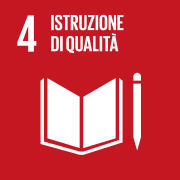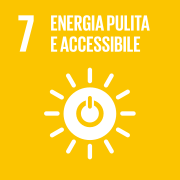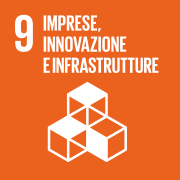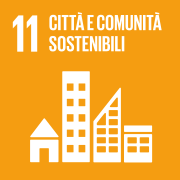
The public administration has a central and irreplaceable role in the country’s digital transformation. Not only as an institutional player, but as a structural enabler of what we now, with increasing clarity, call digital sustainability.
When the digital is at the service of the PA – and when the PA is truly capable of being its interpreter and not just its user – then what is laid down in the second paragraph of Article 3 of our Constitution is realised: the removal of obstacles that prevent citizens from fully participating in the life of the country.
And it is precisely in the architecture of public digital services that this equality takes shape: in accessibility, in ease of use, in the transparency of algorithms, in the capillarity of platforms. Digital, in short, as a concrete tool to reduce inequalities, to make administration closer, to design new and accessible rights.
In this scenario, public sector in-house companies are not comprimarios. They are strategic levers, operational and intelligent tools created to enable the public administration to cope with the complexity of transformation with a level of flexibility, competence and engagement that is difficult to achieve otherwise.
They have the ability to attract talent, to operate with more streamlined procedures, to dialogue with the market without losing sight of the public mandate from which they derive. And for this very reason, they are – themselves – vehicles of sustainability, because they are capable of aligning technological action with the general interest, avoiding speculative drifts or design inconsistencies.
Their hybrid positioning makes them unique: not profit-driven, but tied to the quality and effectiveness of public intervention. In a context where PA demand and market supply often struggle to understand each other, in-house companies act as intelligent mediators: they read the needs of public bodies, translate their requirements into technical requirements, and structure public demand so that it is recognisable and sustainable for vendors.
And they do so on the basis of a pre-existing wealth of knowledge, sedimented over time: that relating to the infrastructures, systems, software architectures, and administrative processes of the entities to which they belong. A human and information capital that cannot be improvised, nor easily replicated.
In this, in-house organisations play a subsidiary and complementary function to the parent PA. They are part of the same institutional family, but also look outwards. They know the codes of the market, but are not subject to its logic. They understand the PA’s timeframe, but know the value of an innovation that arrives at the right moment.
That is why they are decisive today: because they can help the Public Administration to finally become citizen-centric, not by slogan, but by infrastructure.
They do not just ‘go digital’, but help to design a vision of public administration that meets today’s needs and tomorrow’s challenges.
But if this is the frame of reference, it is worth trying to observe it in its historical becoming, in its systemic breath, and in its transformative tension. Because what we now call ‘in-house’ is the result of a sophisticated hybrid, grown almost by evolutionary adaptation to the contradictions of the public ecosystem.
In-house companies came into being because the public administration, on its own, could no longer cope. It could not translate regulatory requirements into operational projects, nor could it keep up with the pace of advancing technology. But at the same time, radical outsourcing generated distortions: loss of control, poor accountability, planning inconsistent with the public interest.
In-house companies are the unstable balance between these two extremes: a public tool that speaks the language (and sometimes the rhythm) of the private sector, but without its profit logic. A PA that does not give up its own direction, but accepts to evolve in form so as not to succumb in substance.
That is why in the digital transformation of public administrations – understood as the transition from a paper-based, reactive administration to a proactive, interoperable, citizen-oriented PA – in-house companies are frontier agents.
They do not just implement, but interpret. They do not only deliver, but translate political vision into technical architecture, rights into processes.
They are ‘contact zones’ between systems. They know the standards, but also the structural limits. They know the funding programming cycle, but also the edgy reality of a municipality with two staff members. They have the flexibility to attract skills that the PA struggles to recruit, but they also have the obligation – moral, before being regulatory – to do it for the PA, not instead of the PA.
Yet, precisely at a time when they should be strengthened, in-house centres still suffer from an unspoken stigma. They are sometimes seen as ‘fallbacks’, ‘shock absorbers’, ‘car parks’. But the truth is that where in-house companies really work – and there are many of them – they prove that they can be the operational heart of digital citizenship.
Think of the ability to manage strategic infrastructures such as regional data centres, or the construction and maintenance of interoperable platforms for citizen services. Let us think of the growing role in cybersecurity, where the PA needs constant monitoring, but also adaptability, updating, and 24/7 supervision.
However, there is a risk: that in-house companies are loaded with expectations without being put in a position to act. Or worse, that they are asked to ‘do like the private sector’ without recognising their public constraints or enhancing their mission.
Their existence only makes sense if it is set in a clear governance framework, where the public interest mission is not a declaration of principle, but a concrete grid of objectives, indicators and monitoring tools. A governance that rewards generated value, not just bureaucratic reporting.
In this sense, talking today about digital sustainability also means talking about the structural role of in-house as a guarantor of continuity and equity.
Because sustainable digital is not just ‘green IT’, nor is it just the energy balance of an infrastructure. It is the ability to produce – in a lasting way – digital services that do not increase the gap between the haves and have-nots: bandwidth, tools, skills, access capacity.
In-house also means this: ensuring that technology infrastructures are never neutral, but are designed and maintained with a clear inclusive bias. That every euro spent on technology serves to reduce barriers, not to build new ones.
An in-house company can do this because it knows the entities of which it is an expression. Because, unlike a supplier, it does not ‘sell’ digital services, but tailors them, accompanies them, updates them, integrates them. In a world where procurement logics risk transforming the PA into a mere ‘buyer’ – sometimes even unaware – in-house companies can instead be guardians of meaning, guarantors of coherence between means and end.
However, a cultural change is needed, as well as a legislative one. The digital transition of PA will never be fully effective if it is not also an institutional transition. If PA does not think of itself as an ecosystem, as a network, as a distributed operating system.
In this sense, in-house can be the connective tissue of a new idea of administration: no longer organised by silos and counters, but by services and relations. No longer based on documents to be produced, but on rights to be activated.
All this has an important corollary. In-house organisations are not, nor can they be, mere executors. They are – or must become – co-authors of the transformation. They participate in design, governance, impact assessment. If they remain on the margins of the strategic debate, if they are treated as mere executors of specifications, then their potential is betrayed, and the public system misses an opportunity.
There is much more at stake than just efficiency. There is the very idea of a full, universal, digital citizenship. There is the possibility of designing public services that do not merely ‘replicate online’ physical counters, but that reinvent the relationship between state and citizen. And to do so, we need subjects that speak both languages: that of technology and that of law. That of the machine and the mandate.
At a time when the future is also measured in the ability to ‘shape complexity’, in-house organisations are potentially the cartographers of public transformation. It is not enough for them to chart safe paths. They must also help the PA to read the landscape. And, when necessary, to change it.
















